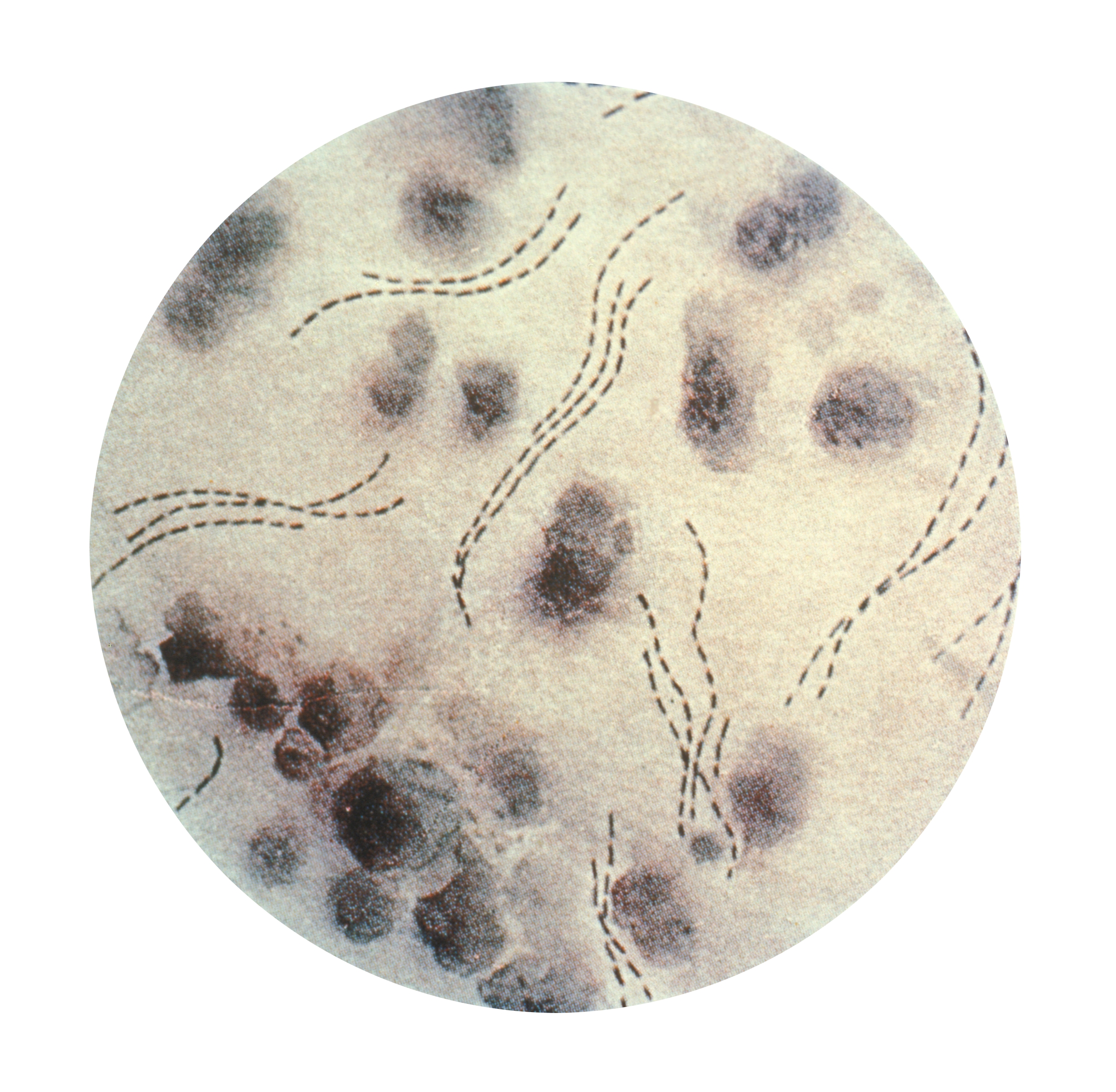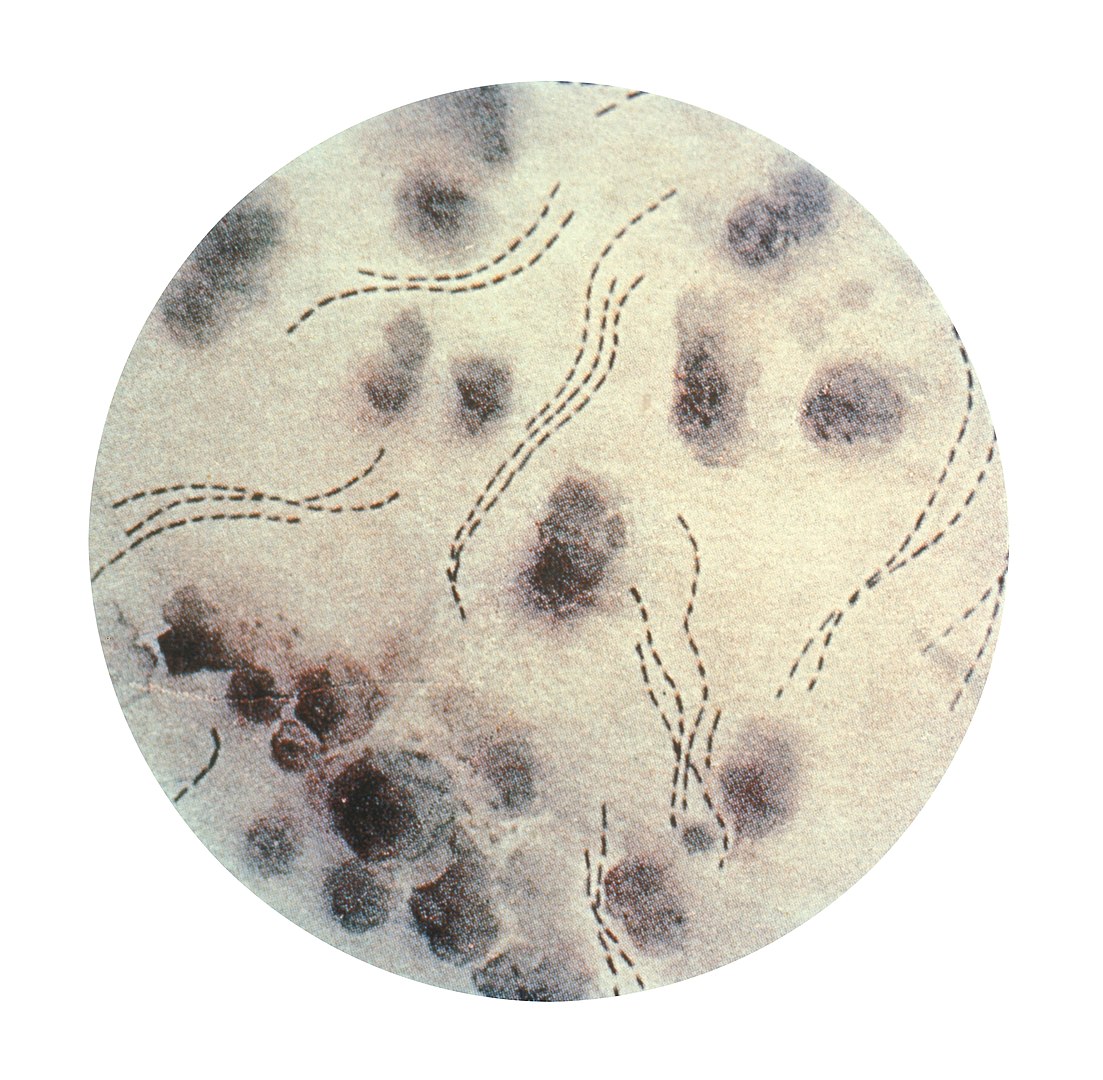Playlist
Show Playlist
Hide Playlist
Haemophilus Ducreyi
-
01-19 Haemophilus.pdf
-
Download Lecture Overview
00:01 Now, let's shift to Haemophilus Ducreyi which is much less common thankfully. 00:06 It is a cause of the sexually-transmitted infection known as chancroid. 00:10 Chancroid is symptomatic in males and as you can see from the projected image, you could imagine why that would be. 00:18 Chancroid, when it occurs, in females, is quite asymptomatic. 00:22 The pathogenesis of Haemophilus ducreyi has to do with Pili which will attach to underlying genital and perianal mucosa. 00:31 Clinical manifestations, Haemophilus Ducreyi and chancroid is a cause of one of the painful ulcers of the genitals. 00:40 Unlike some other causes which we'll talk about in other parts of these series which cause painless ulcers of the genitals, chancroid is painful. 00:49 In five to seven days after exposure to the organism and starting to develop those painful ulcers on the genitalia, then a local or regionalized lymph reaction via inguinal lymphadenopathy will develop. 01:05 Because this is a rapid onset of swollen lymph nodes, those lymph nodes will be tender. 01:12 They're stretching the capsule of the lymph node in which are residing the pain fibers. 01:17 Diagnosis largely is a diagnosis of exclusion. 01:21 Primary syphilis and herpes simplex are very common causes although more often than not, may cause painless lesions. 01:30 If one can exclude those clinically, then treatment for chancroid with Haemophilus ducreyi is accomplished with ceftriaxone and azithromycin. 01:40 So we have two different manifestations of two different types of Haemophilus. 01:46 One, very common, one, thankfully somewhat unusual. 01:50 The Haemophilus influenzae, however, as the common cause of many sinopulmonary infections is absolutely something to be aware of and to think about when making typical diagnosis. 02:02 Here ends the story on Haemophilus.
About the Lecture
The lecture Haemophilus Ducreyi by Sean Elliott, MD is from the course Bacteria.
Included Quiz Questions
Which type of sexually transmitted disease is caused by Haemophilus ducreyi?
- Chancroid
- Syphilis
- Herpes
- Chlamydia
- Gonorrhea
Customer reviews
3,0 of 5 stars
| 5 Stars |
|
1 |
| 4 Stars |
|
0 |
| 3 Stars |
|
0 |
| 2 Stars |
|
0 |
| 1 Star |
|
1 |
So useful, and yes the sound is on! It would be nice if you went deeper into the diagnosis
no sound on the video. no sound on the video.






